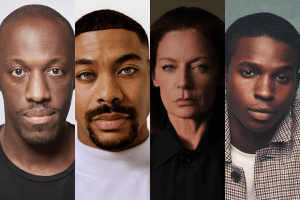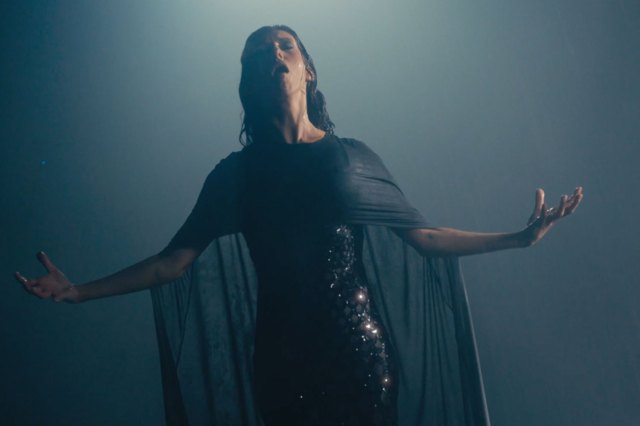Inua Ellams On … Telling The 14th Tale
Inua Ellams is an acclaimed performance poet whose new show, The 14th Tale, opens at the NT Cottesloe this week having been developed (through theatre company Fuel) at the BAC and Arcola.
move to Europe following childhood in Nigeria as he awaits news in a hospital waiting room.
Combining
comic dialogue with poetry and prose, the autobiographical account encapsulates the trials of
adolescence and depicts Ellams’ life as a young, black male in London today.
Directed by Thierry Lawson, The 14th Tale was part of Fuel’s programme of work at the Edinburgh Fringe last year, for which they were awarded a Herald Angel.
The first poem I wrote was a Shakespearean sonnet: 14 lines, the strict rhyme scheme, iambic pentameter, rhyming closing couplet etc. The poem was hideous, but I started out in this game working within confines; years later I strayed (and have stayed) into free verse.
In a course run by the Arvon Foundation, the novelist Leone Ross taught me the basics of short story writing and then at the Soho Theatre, I attended a ten-week introduction to playwriting. From these, I gathered the ubiquity of structure, at the very least, a vague order of things in any decent piece of literature – regardless of how cutting edge or avant garde.
The language with which we describe the building blocks – verse, chapter, act, iamb, paragraph, scene – differ, but essentially mean the same. There must be an established someone, or something we are invested in within these blocks. There must be exploration, an inciting incident, a heightening of emotion, a change, a climax, a return. These vary in scale, concentration, subtlety, style, pace, length, voice etc and herein lies the framework for genius – the order of structure.
As the Soho Theatre drilled this into me, I scrutinised poems and found I’d employed them instinctively, there, beneath the skins of narrative poems and deeper, convoluted but unmistakable in the metaphysical, multisyllabic rants I 19-year-oldly wrote.
So when it came to writing The 14th Tale, I knew what to do; I’d done so for years. But structure means squat if the story itself – to employ ebonics – is wack. The first challenge was this but six drafts deep and the wackness had me. I was close to calling quits till the poet and playwright, Roger Robinson, asked what I was most afraid to write about. I answered truthfully – ‘myself’. He demanded I do so, and hair-pulling, dandruff littering like confetti, I extended a poem about my father called Ash Skinned.
From this, a mustard seed of theme appeared. Now, in the performance poetry world, where there are those who somehow memorise three-minute-long poems as they write, never mind two days after, the next step would be to find a stage and share. The thrill is in immediacy, instant gratification; the acknowledgement of a good poem. But this wasn’t written for instancy. Instancy was the old black. I wanted the new.
And this was different. Between writing a poem you might share on a stage, and a long one for a typical theatric space, you have to sacrifice instancy and take the audience on a longer ride. As the mustard seed grew and I chopped it into verse, chapter, act, iamb, paragraph, scene, I considered the space it would be heard in. I can run around, can wave my hands a lot more, jump here, or there.
When I met Thierry Lawson, director of The 14th Tale, he sat back and asked that I run around the rehearsal room showing my ideas for staging. In doing so, he got to understand my physicality, and built the play from there. As we edited the script, Thierry showed that some ideas and emotions could be better communicated with my body, rather than words. He also talked up silence, which as you can imagine isn’t used a great deal in poetry. And in silence came one of theatre’s vices: lighting. Gorgeously designed by Michael Nabarro, it is at times a supporting actor on stage, at times a hand that subtly slides audiences into worlds I describe, at times a punchline.
Any design elements used brashly can hide or divert attention from, say, a perfect metaphor, and it’s a fine art knowing where and when; one known by Thierry who strove for the bare essentials. Prop-wise, he chose a chair and torch light, nothing else. Asides from my wavings and jumpings, he trusted what is central to performance poetry: the ability to construct entire worlds with words, the musicality of language, and just one voice.
The 14th Tale opens on 9 February at the NT Cottesloe, where it runs in rep until 13 March 2010.












